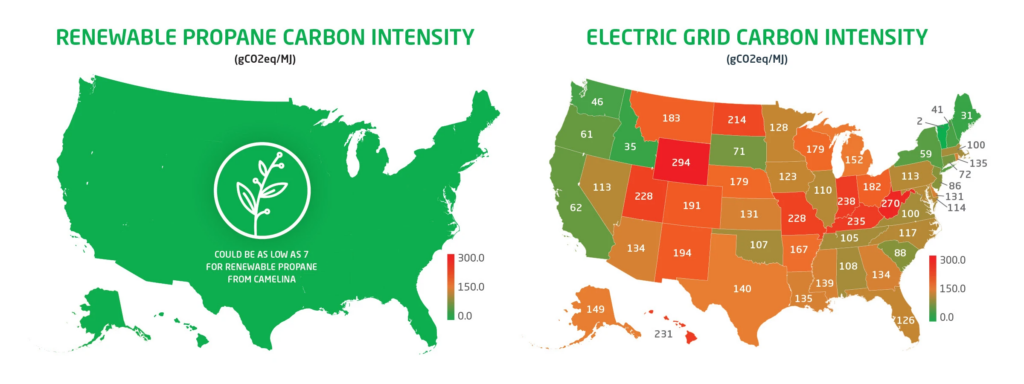The following blog is from PERC (Propane Education & Research Council)
For more than 100 years, Americans have been using abundant, affordable, American- made propane for low-carbon energy that goes places other can’t. And with renewable propane, it’s getting even better.
What is renewable propane?
Renewable propane has the same great features as conventional propane — reliability, portability, power, and reduced carbon emissions
— but with even lower carbon emissions when compared with other energy sources. Unlike conventional propane, renewable propane can be made from a variety of renewable feedstocks. The most common form of renewable propane today is a byproduct of renewable diesel and sustainable aviation fuel made primarily from plant and vegetable oils, animal fats, or used cooking oil.
How is renewable propane cleaner than conventional propane?
Renewable propane’s carbon intensity — or the carbon emitted for every unit of energy it produces — is lower than conventional propane because it’s produced from bio-based or renewable sources.
What kind of plant stock is renewable propane made from?
More and more renewable propane is being generated from the seed oil of the camelina plant. Also known as camelina sativa or false flax, camelina is a member of the mustard family and a relative of cabbage, kale, and cauliflower, but is not a food crop nor does it compete with food production.
Where is camelina grown?
Today, camelina is grown in cooler regions of the U.S. and will expand to the south as producers are experimenting with varieties that can thrive in warmer climates. Camelina is drought and pest tolerant and is a pollinator for bees. This cover crop is completely waste-free as the seed produces 40% oil, twice the amount of soybean, the remaining meal is FDA approved for cow and chicken feed, and the husks are used for mulch. It is beneficial for farmers because it enriches the soil and prevents erosion when fields are fallow and provides additional income without the need for new equipment.
Is renewable propane made from camelina cleaner than the grid?
Renewable propane made from camelina oil has a lower CI score than the electric grid in 49 states, and renewable propane made from non-camelina oil feedstocks has a lower CI score than the electric grid in 45 states.


How does renewable propane compare with other energy sources?
The carbon intensity of renewable propane depends on the feedstock, but it’s lower than many other energy sources. For instance, according to the California Air Resources Board (CARB), renewable propane made with domestic, non- rendered, used cooking oil has a carbon intensity score of 20.5 (grams CO2 equivalent per megajoule or gCO2eq/MJ), whereas conventional propane has a carbon intensity score of 79, lower than most other energy sources. 7 gCO2eq/MJ is being claimed by Global Clean Energy, producer of camelina, however that has not been certified by EPA or CARB yet.
Is renewable propane available now?
Yes. U.S. fuel processors are making renewable propane today, and the push for cleaner liquid fuels such as sustainable aviation fuel and renewable diesel fuel will lead to a sharp increase in renewable propane production.
By 2050, renewable propane could meet half the world’s demand for propane, according to the World LP Gas Association.
How Renewable Propane is Made

Our Responsibility
Renewable propane represents a significant step forward in the journey towards sustainable energy solutions. With its lower carbon emissions and versatility, renewable propane offers a cleaner alternative to conventional propane, aligning with our commitment to reducing environmental impact. Made from renewable feedstocks like camelina, it not only provides a greener energy source but also contributes to agricultural sustainability and rural economies. As renewable propane becomes increasingly available and accessible, it has the potential to revolutionize the energy landscape, meeting a significant portion of global demand while supporting a cleaner, more sustainable future for generations to come. Join us in embracing renewable propane as we continue our collective efforts towards a greener, more sustainable world.